Armin Landeck | |
|---|---|
 | |
| Born | June 4, 1905 Crandon, Wisconsin |
| Died | December 1, 1984 (aged 79) Litchfield, Connecticut |
| Nationality | American |
| Known for | Printmaking |
| Website | arminlandeck |
Armin Landeck (1905-1984) was an American printmaker and educator.
Armin Landeck | |
|---|---|
 | |
| Born | June 4, 1905 Crandon, Wisconsin |
| Died | December 1, 1984 (aged 79) Litchfield, Connecticut |
| Nationality | American |
| Known for | Printmaking |
| Website | arminlandeck |
Armin Landeck (1905-1984) was an American printmaker and educator.
Landeck was born on June 4, 1905, in Crandon, Wisconsin. [1] He studied at the University of Michigan and then Columbia University, graduating in 1927. After he graduated he traveled for over a year in Europe, returning to New York and Connecticut. [2] He began creating prints using a variety of techniques including aquatint, drypoint, etching, and lithography. In 1934 he and fellow artist Martin Lewis started the School for Printmakers, where they taught printmaking. The school closed in 1935 and Landeck went on to work with Stanley William Hayter at Atelier 17. [1] In 1953 Landeck received a Guggenheim Fellowship. [3]
Landeck taught at the Brearley School in New York City from 1931 until 1958. He then retired to his farm in Litchfield, Connecticut. He died on December 1, 1984. [1]
Landeck's work is included in the collections of the Art Institute of Chicago, [4] the Metropolitan Museum of Art, [5] the Museum of Modern Art, [6] the National Gallery of Art, [7] and the Pennsylvania Academy of the Fine Arts, [8] and the Smithsonian American Art Museum. [9]

Abraham Rattner was an American artist, best known for his richly colored paintings, often with religious subject matter. During World War I, he served in France with the U.S. Army as a camouflage artist.
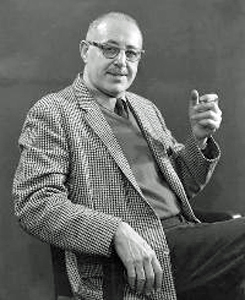
Harry Sternberg (1904–2001), was an American painter, printmaker and educator. He taught at the Art Students League of New York, from 1933 to c. 1966.
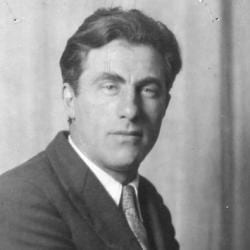
Harry Gottlieb was an American painter, screen printer, lithographer, and educator.
Lawrence "Larry" Zox was an American painter and printmaker who is classified as an Abstract expressionist, Color Field painter and a Lyrical Abstractionist, although he did not readily use those categories for his work.

Yvonne Helene Jacquette was an American painter, printmaker, and educator. She was known in particular for her depictions of aerial landscapes, especially her low-altitude and oblique aerial views of cities or towns, often painted using a distinctive, pointillistic technique.

Rico (Federico) Lebrun was an Italian-American painter and sculptor.

Arnold Blanch, was born and raised in Mantorville, Minnesota. He was an American modernist painter, etcher, illustrator, lithographer, muralist, printmaker and art teacher.
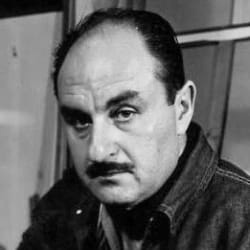
Gabor Peterdi was a Hungarian-American painter and printmaker who immigrated to the United States in 1939. He enlisted in the US Army and fought in Europe during World War II. He lived and worked primarily in New York and Connecticut, teaching at the Brooklyn Museum, Hunter College and Yale University in addition to working at his art.
Peter Grippe was an American sculptor, printmaker, and painter. As a sculptor, he worked in bronze, terracotta, wire, plaster, and found objects. His "Monument to Hiroshima" series (1963) used found objects cast in bronze sculptures to evoke the chaotic humanity of the Japanese city after its incineration by atomic bomb. Other Grippe Surrealist sculptural works address less warlike themes, including that of city life. However, his expertise extended beyond sculpture to ink drawings, watercolor painting, and printmaking (intaglio). He joined and later directed Atelier 17, the intaglio studio founded in London and moved to New York at the beginning of World War II by its founder, Stanley William Hayter. Today, Grippe's 21 Etchings and Poems, a part of the permanent collection at the Davis Museum and Cultural Center at Wellesley College in Wellesley, Massachusetts, is available as part of the museum's virtual collection.

Worden Day (1912–1986) was an American painter, printmaker, and sculptor. Day was the recipient of a Guggenheim Fellowship in both 1952 and 1961.
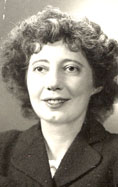
Victoria Ebbels Hutson Huntley was an American artist, and printmaker.

Michael Ponce de Leon (1922-2006) was an American printmaker and painter.
John Millard Ferren was an American artist and educator. He was active from 1920 until 1970 in San Francisco, Paris and New York City.

Frances Ynez Johnston was an American painter, sculptor, printmaker and educator. Her artwork is modernist and abstract with a narrative of imaginative lands or creatures, and often featuring collage. Johnston was based in Los Angeles.
Thomas Brownell Eldred was an American Abstract expressionist painter and printmaker.
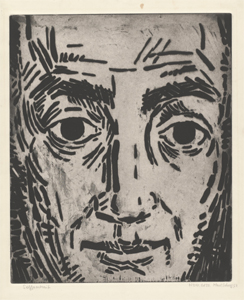
Karl Schrag was an American printmaker and educator. He has been characterized by the National Gallery of Art as "among the most important printmakers in America during the 1950s".

Harold Persico Paris (1925–1979) was an American printmaker, sculptor and educator. He taught art classes at the University of California, Berkeley from 1963 until 1979.
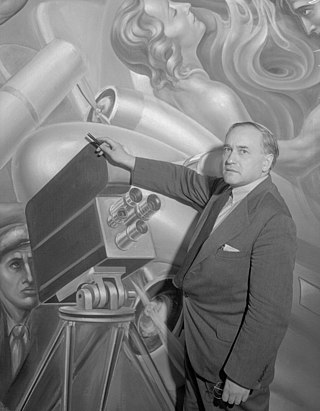
Leo Katz was an American painter, muralist, printmaker, and photographer.

Frederick Gerhard Becker (1913-2004) was an American printmaker and educator.
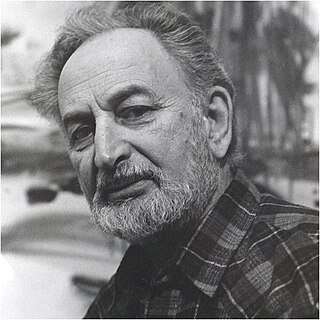
Hugh Mesibov was an American abstract expressionist artist who began his career as a federal artist for the Works Progress Administration during the Great Depression and later became a member of the 10th Street galleries and part of the New York School during the 1940s-60s. His work has elements of the mid-20th-century New York artistic experience such as Surrealist and Abstract Expressionist and figurative aspects across several media such as watercolor, oil, and acrylic as well as etchings, lithographs and monoprints. His work has received a global reputation and is included in many collections in the United States and worldwide.